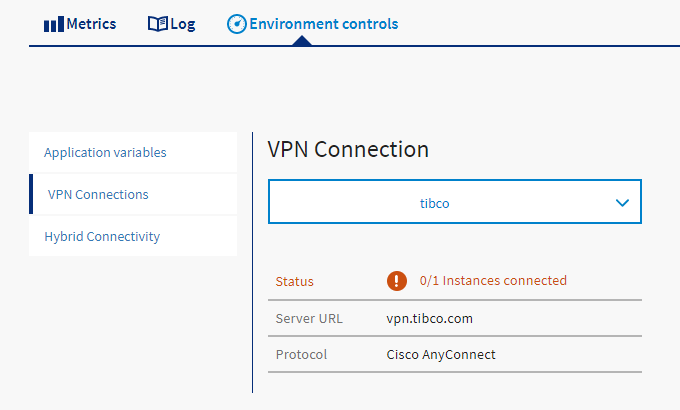Managing Node.js Apps
The Node.js apps you've deployed to TIBCO Cloud™ Integration can be managed in the same way as the other apps. Most of the items in Using TIBCO Cloud™ Integration Apps apply to Node.js apps. Some highlights are detailed below.
Starting, Stopping, and Scaling Node.js Apps
The number in the Instances column on the Apps page shows how many instances of your app you have running. If you click the app, the instances target is shown in the upper right of the App Details page. When you hover over that number, a control appears, which enables you to change the number of instances. To scale up your app, click the up arrow to add instances to the app, then click Scale. To scale down, click the down arrow, then click Scale. You can stop your apps by scaling them down to 0 instances, or clicking Stop on the Apps page.
See Starting, Stopping, And Scaling Apps for more information.
Writing App Logs
As logs are streamed from your app into TIBCO Cloud Integration you can see them on the Log tab of your apps' details page. Logs can be viewed in a scrolling real time display, or you can select a time range to view historical logs.
Viewing and Downloading Node.js App Logs
The logger.js file, that is in the util folder helps to write the output of your app in the format that TIBCO Cloud Integration expects. Like integration apps, you can view logs for your Node.js apps on the Logs tab of an App Details page. Logs can be viewed in a scrolling real time display, or you can select a time range to view historical logs. You can also download historical app logs from a specified time/date range.
See Viewing Logs andDownloading Logs for more information.
Viewing Node.js App Metrics
You can monitor the performance metrics of your Node.js apps on the Monitoring tab of an App Details page. This tab displays performance metrics such as CPU and memory usage.
See Viewing App Monitoring Details for more information.
Using a VPN With Node.js Apps
You can connect Node.js apps hosted in TIBCO Cloud Integration to services running on-premise in your network using a virtual private network (VPN). This is referred to as hybrid connectivity. See VPN Overview for more details on VPNs.
The VPN used for an app is configured on the Environment controls tab of an App Details page.
You must first create a VPN as described in Creating a VPN Connection. See Using a VPN in an App for more details.
Deleting Node.js Apps
Like other app types, you can delete Node.js apps from the Apps page.
See Deleting an App for more information.

